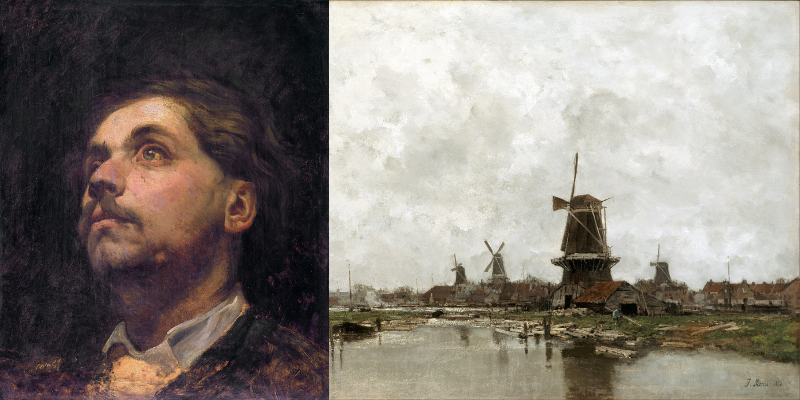25th August, 2023. ON THIS DAY.
Jacob Maris, born on August 25, 1837, in The Hague, Netherlands, was a prominent Dutch landscape painter and a leading figure in the renowned Hague School of Painters. Alongside his brothers Willem and Matthijs, Maris’s journey as an artist was marked by evolution, experimentation, and a mastery of atmosphere that set him apart as a true luminary of his time.
Maris’s early artistic training took him to Antwerp and Paris, where he was exposed to a rich blend of influences from the 17th-century Dutch masters as well as the Barbizon School. This education laid the foundation for his distinctive style. Initially, much of his work featured domestic scenes with figures, showcasing his technical skill and attention to detail.
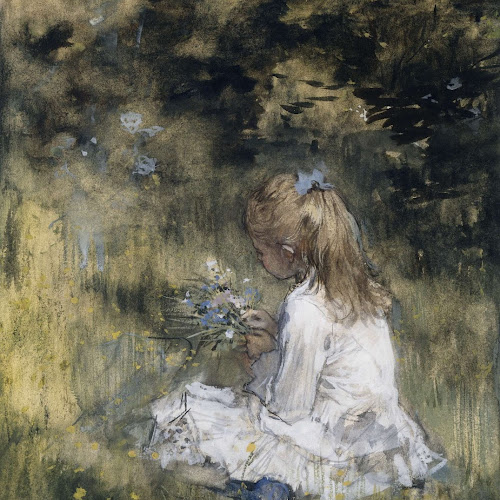
Courtesy: Rijksmuseum
However, a pivotal turning point came when Maris returned to The Hague in the summer of 1871. This marked a shift in his artistic focus, as he shifted away from figurative painting and delved into the realm of landscapes. This transition was fueled by a newfound passion for capturing the essence of natural scenes with his bold and innovative approach.
Jacob Maris Artworks
Maris’s landscapes are characterized by their atmospheric effects and attention to light. He had an extraordinary ability to depict various conditions of light and weather in his paintings of the same scene, showcasing his dedication to capturing the ever-changing beauty of nature. His scenes often featured elements of the Dutch countryside, including bridges, windmills, and quays, against misty skies or drifting clouds. In both his watercolour and oil works, the atmosphere takes precedence, allowing viewers to immerse themselves in the mood and ambience of each piece.
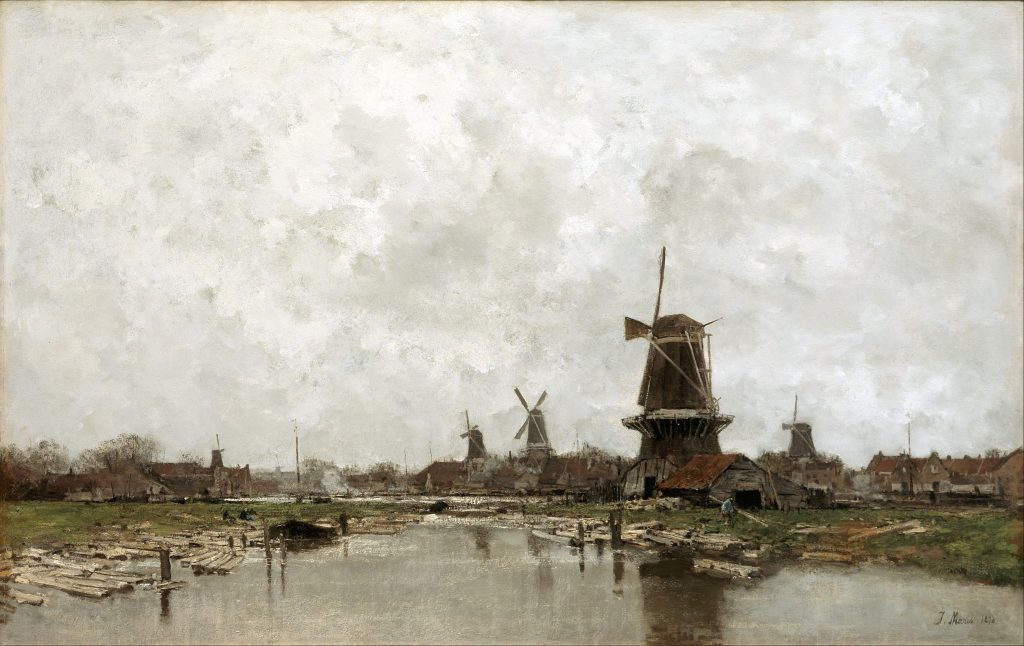
Courtesy: Wikipedia Commons
Maris’s contributions went beyond his artistic output; he became a key member of the Hague School, a group of painters known for their emphasis on capturing the landscapes and everyday life of the Netherlands. Despite having only a few formal pupils, his influence reverberated throughout the art world. His work inspired numerous artists to explore the interplay between light, colour, and atmosphere.
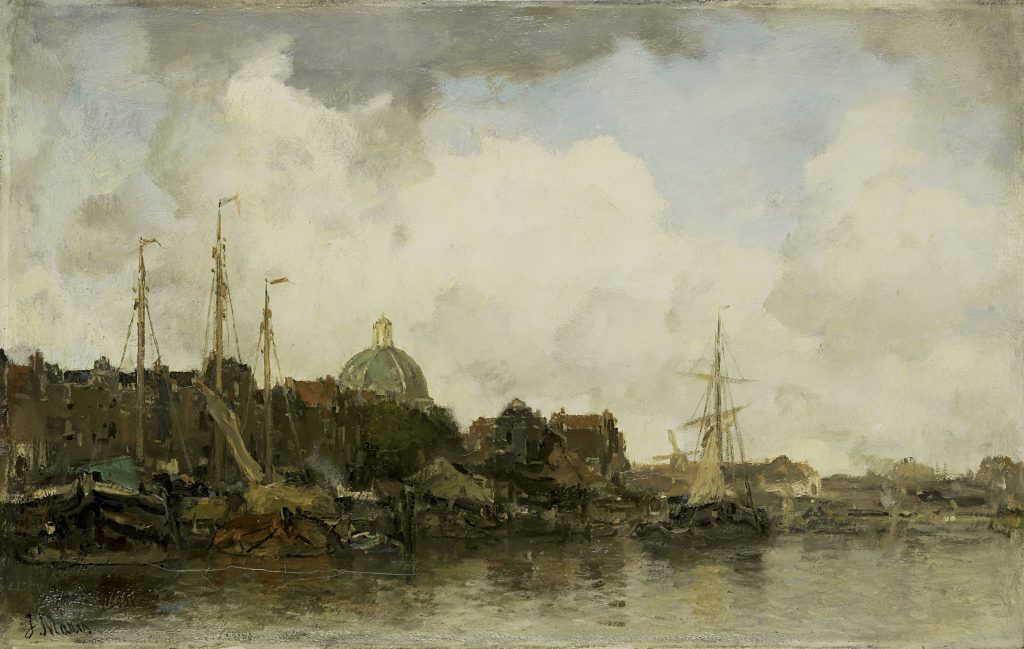
Courtesy:Wikimedia-Commons
One of Maris’s notable achievements was his mastery of painting light and weather. His landscapes exude a sense of tranquillity and evoke a deep connection to nature. Scenes like “Stadsgezicht met koepelkerk” and “Ferry” exemplify his skill in conveying the mood and atmosphere of a place through his art.
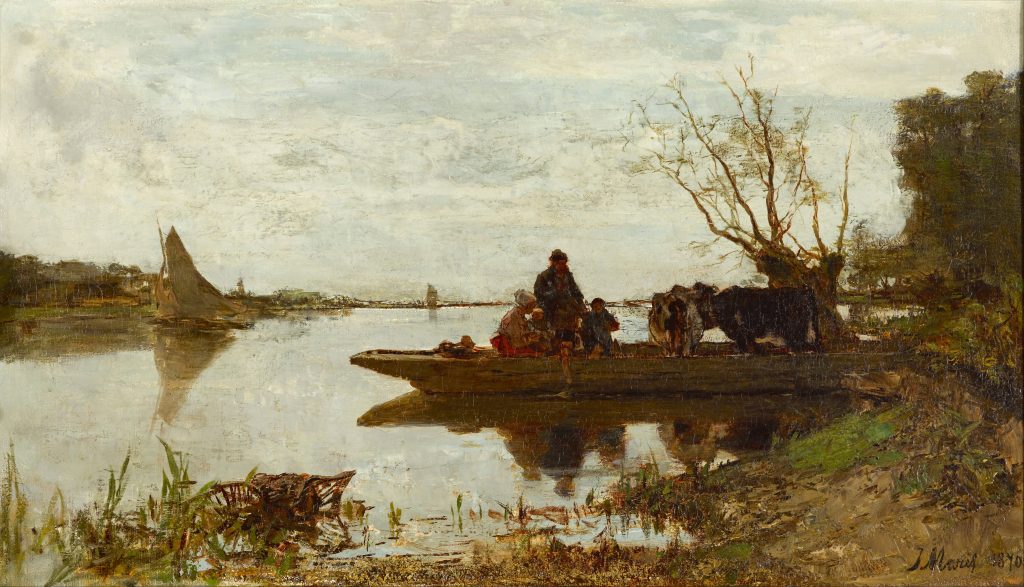
Courtesy: Wikimedia Commons
Maris’s impact extended beyond his canvases; he played a crucial role in shaping the direction of Dutch Impressionism. He advocated for plein air painting and encouraged his students, including the likes of George Hendrik Breitner, to experiment with vivid colours and outdoor painting techniques.
The legacy of Jacob Maris is firmly ingrained in the art world’s history. His ability to balance technical precision with emotional depth in his landscapes solidified his place as a master of his craft. While his artistic journey saw shifts and adaptations, his commitment to capturing the beauty of nature and the play of light remained constant.
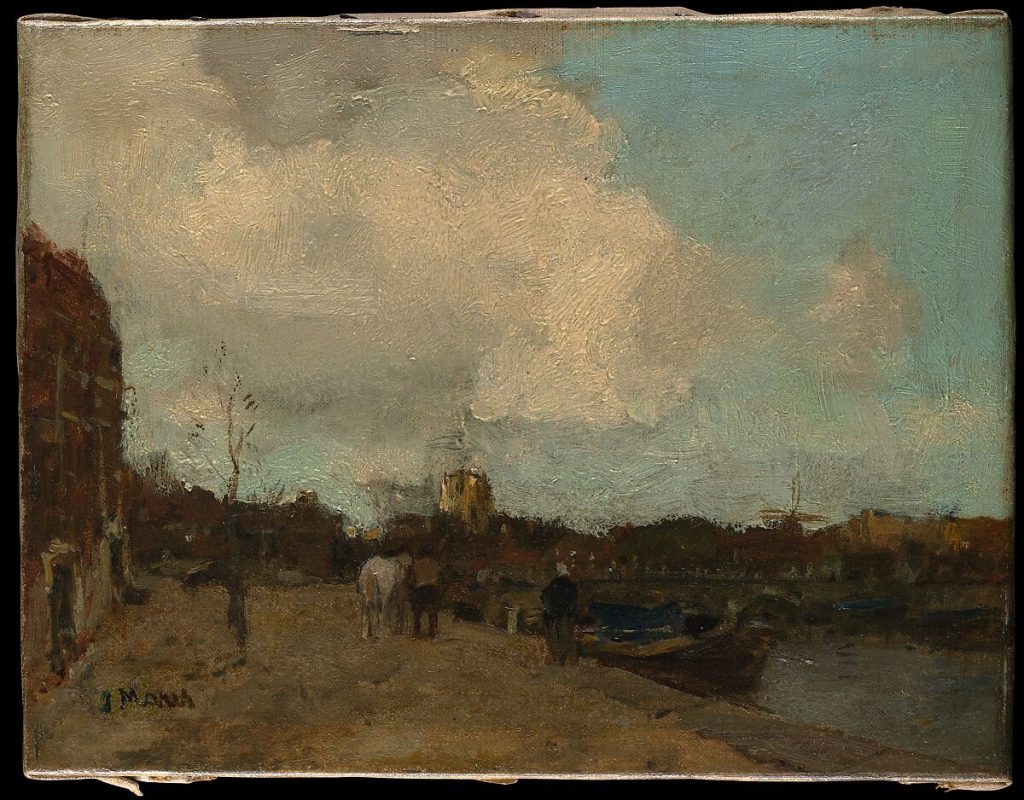
Courtesy Met
Tragically, in his later years, Maris battled health issues, including asthma and corpulence. Seeking relief, he travelled to Karlsbad (now Karlovy Vary, Czech Republic) for its therapeutic waters. He passed away on August 7, 1899, leaving behind a legacy that continues to inspire artists and art enthusiasts to this day.
In summary, Jacob Maris’s life and artistic journey were defined by his evolution from figurative scenes to captivating landscapes that emphasized the interplay of light and atmosphere. His ability to capture the essence of nature and convey mood through his unique technique set him apart as a luminary of the Hague School.


